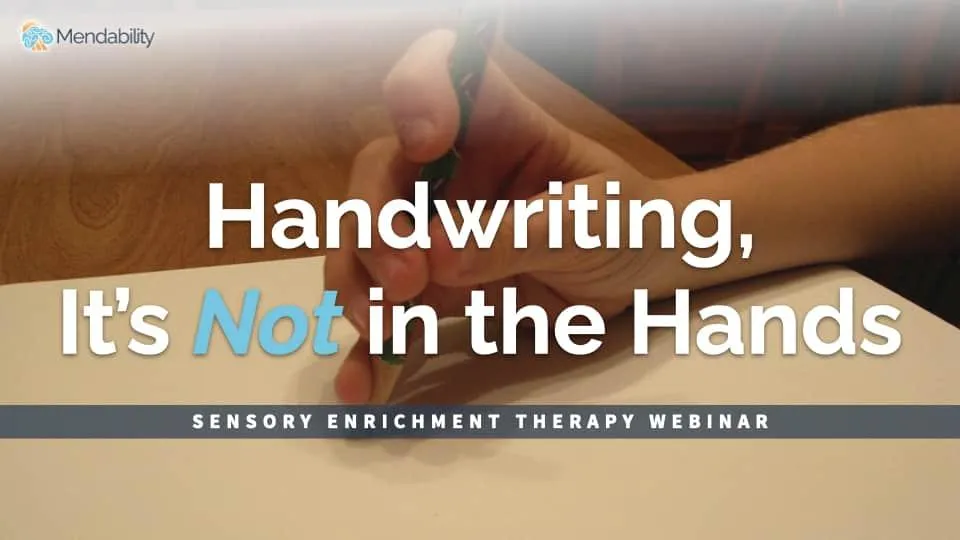
How to do Sensory Enrichment Therapy when you are traveling this summer
Vacation destinations and community outings can provide opportunities for environmental enrichment for a child, with a host of new scents, sights, and textures.
Of course, new environments and change can also cause stress and anxiety for kids and adults with developmental disorders; therefore, we must also incorporate strategies that will help prepare our loved ones to take advantage of these new sensory experiences.
With the ideas we explore in this article, we anticipate that not only will you have a more relaxing trip, but it could also become a powerfully stimulating experience for everyone involved.
(This article is a summary from a live training group call for families doing Sensory Enrichment Therapy.)
Prepare
The most important thing you can do to help anyone take advantage of new experiences is to help them anticipate those experiences.
Consider the following ideas:
Watch videos (or look at pictures) of the new places you will visit (hotel, road, city, landscape, attractions, etc.)
Talk regularly about the activities you will do on vacation, ideally each day, even if your child is non-verbal.
Use some of the items you will be using while you travel (beach toys, beach towel, etc.)
Be Creative
If you are currently doing Sensory Enrichment Therapy at home, then you know that organized, pleasurable sensory experiences are essential for brain development. If you are not currently enrolled, and you would like to learn more about the benefits of sensory enrichment, please visit: https://mendability.com/how-it-works/
Use what’s around you. While you are away from your formal enrichment program, use what’s around you, there are new experiences to be had everywhere. With your Sensory Enrichment Therapy training, look for opportunities to engage with your new environment by combining sensory inputs. Look at the beach while running your fingers in the sand, smell the hotel shampoo while in the bathtub, etc.
Make a plan each day of the sensory inputs you will focus on and keep your eyes open for opportunities during that day. E.g. If you choose to focus on touch and smell one day, you may find yourself finding an opportunity to smell a flower while you run a blade of grass on the palm of the hand.
If you can, look for ways to do the exercises assigned to you that week by using things around you. See if you can at least do the complete Multisensory Core Protocol routine every day.
If you cannot find ways to do your custom set of exercises, then here are a couple of ideas of protocols that would be good to do:
Games at the Hotel
Ice Cubes in the Bath
While your loved one is in a warm/hot bath, give him ice cubes to handle. This may approximate the benefits of a popular and powerful protocol, the Water Game where you experience contrasting temperatures.
Multi-texture Path with Hotel Towels
Line up a few different things for your child to walk on with his eyes closed (if he can keep his eyes shut). You can use towels, pillows, the coffee tray, etc. to introduce as much variety as possible in the textures, depths, temperature responses, etc. The multi-texture path is a good grounding protocol.
Games at the beach
If the beach is where your holiday takes you, here are some ideas for enriching activities:
Walk Along a Row of Beach Towels. Roll up beach towels to make a 4″ path for them to walk on. With their arms extended in front of them, have him/her walk on your beach towel path. You could make things a bit more interesting by inviting them to try it with their eyes closed.
Optional. Have him hold a big beach ball high above his head. This is a very good activity to stimulate both the central and peripheral vision.
Finding matching items by touch. Find pairs of random objects (twigs, pebbles, shells, leaves, etc.). Place one of each in a bucket of water and the others in front of your loved one. Point at one of the objects in front of them and invite your loved one to retrieve its twin from the bucket of water without looking.
Warm and cold. Have your loved one place one hand in a bucket of seawater and one hand on the warm sand. Swap and repeat a couple of times. No creativity, this is a simple exercise of contrasting information. The only rule is to do both tactile inputs at the same time.
Physical Exercise
A few studies have come out recently confirming once again the neurological benefits of aerobic exercise. It doesn’t really matter what the form of exercise is, but we do recommend that your loved one be required to work hard for the generally recommended 20 minutes a day.
Exercise has many benefits for the brain, but the one you may feel is the most needed while you are traveling is sleep.
Conclusion
With planning, preparation, and creativity, you can make your next vacation a successful, enriching experience for you and your loved ones. Help them anticipate the new surroundings and sensory experiences and then look for creative opportunities to enrich their environment.



